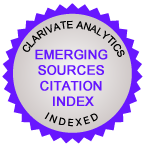A portfolio approach to the management of R&D projects of a technological university: The case of the Skolkovo Institute of Science and Technology
DOI:
https://doi.org/10.21638/spbu18.2024.401Abstract
Purpose: to determine how the presence of a balanced technology portfolio, including projects at various stages of Technology Readiness Levels (TRLs), affects the success of a university’s industrial cooperation.
Metodology: an analysis was conducted on 755 Skoltech projects implemented during the indicated period. For each project, the initial and final TRLs have been identified; projects have been classified according to the institute’s priority technological domains.
Findings: the study revealed that the success of Skoltech’s research directions is due to the Institutes’ balanced project portfolio that includes projects at various stages of technological maturity, as well as sustainable cooperation with the industry and academic community. Special attention is given to the areas of artificial intelligence and oil and gas research, which demonstrate high productiveness under this approach.
Originality and contribution: this is the first detailed analysis of a university’s technological portfolio from the TRL perspective, enabling the development of methodological approaches to the creation of balanced project portfolios in higher education institutions. The results have practical value for university leaders and research institutions for the strategic planning of research activities as well as developing technological competencies that are in high demand by the industry.
Keywords:
research and development, technology readiness level, technology portfolio, technology development, university management
Downloads
References
References in Latin Alphabet
Translation of references in Russian into English
Downloads
Published
How to Cite
Issue
Section
License
Articles of the Russian Management Journal are open access distributed under the terms of the License Agreement with Saint Petersburg State University, which permits to the authors unrestricted distribution and self-archiving free of charge.





